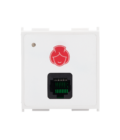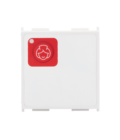On 12 May, we celebrate the International Day of Nurses, when nurses and medical technicians around the world celebrate their day.
This year’s message chosen by the International Council of Nurses is “The Voice of Nurses: A Vision for the Future of Health” and this is exactly what we at Caretronic are aware of.
Digital has been driving a revolution in healthcare. New technologies have reshaped how information is collected and processed, which offers a multitude of immediate insights into people’s physical state and patient care.
Dive deep into our article and find out how digital transformation has impacted healthcare industries around the world.
What is digital health?
Digital health means using the power of technology to help individuals improve their health. In the broadest of scopes it includes categories such as mobile health, health information technology, wearable devices, telehealth, telemedicine, and personalized medicine. By using software, sensors, computing platforms and connectivity, digital health tools also improve the ability of healthcare workers to accurately diagnose and treat patients.
The benefits of digital healthcare
The aim of digital health is to prevent diseases, monitor and manage chronic conditions, lower the costs of healthcare treatments and tailor medicine to individual needs. It is safe to say, it is beneficial for both healthcare providers and patients.
Helps make better-informed decisions.
Encourages preventive health behaviour.
Enables early diagnosis of diseases.
Reduces inefficiencies.
Increases healthcare quality.
Reduces healthcare costs.
Personalizes medicine.
Digital health revolution is shaped by technologies
From wearables, big data to automated medicine dispensers and environmental solutions that offer more freedom to patients with dementia. The digital health boom has brought forward advances, which can be easily implemented into everyday medical healthcare processes.
#1 Big data in digital health
Analytics powered by artificial intelligence offer greater insights and benefits on multiple levels.
Lowering the number of medical errors — Patient record analysis highlights possible irregularities between a patient’s health and a drug prescription. It forewarns health professionals of a possible error before it would lead to unwanted consequences.
Enabling preventive care — A large percentage of patients in hospitals are recurring. Big data analysis has the power to identify these patients and design preventive plans that will keep them from returning in the future.
Preventing information loss — Synchronizing and saving all patient records into a cloud with a digitalized nurse call systems, such as NurseCare, means there is less risk for data duplication, error, loss or document searching.
Organizing staff more effectively — Big data can predict future admissions and help healthcare organizations with accurate staffing. Even more, digitalized nurse call systems like NurseCare offer a continuous overview of staff members, their tasks and their work progress during shifts.
#2 The rise of wearable technology
The quest for medical insight is bigger than ever. In the past, people were satisfied with yearly check-ups, but nowadays more and more are thinking preventive and wearing devices that collect and analyze their bodily functions without pause.
Some of the most popular wearable devices monitor: heart rate, exercise or activity, more specific ones measure sweat (for diabetic patients) and the level of oxygen (for patients with respiratory illnesses).
Wearable devices can even save lives! Caretronic’s wearable wristbands for patients or residents in nursing homes enable instant assistance calls, which trigger the alarm and transmit their location to staff.
Save in the long run. Since wearable technology offers insight and enables people to take better care of themselves, it could mean less work for healthcare organizations in the future.
#3 On-demand healthcare
Medical advice in the palm of your hand. With the rise of mobile people nowadays tap into data whenever and wherever they require it. With billions of articles, online forums and other information available on the internet, on-demand healthcare has never been greater than today. People most commonly research doctors, hospital and medical facilities and use the internet to book medical appointments.
#4 Digitalized healthcare management
It is not only the ordinary person, who has stepped into the digital health revolution, it is also healthcare organizations and their management.
Going from paper to paperless. Electronic documentation is a must, that is why hospitals and nursing homes are digitizing their data processing and storing with advanced nurse call systems, that offer instant access to record patients, enable storing of data directly from the patient’s room, and prevent documentation loss.
Entire healthcare management and nursing documentation in one device. With digitalized nurse call system hospital staff can now access all data through interactive touchscreen displays in patient rooms or in corridors. Management can keep tabs on all active or completed tasks.
Say goodbye to ordinary pagers. Advanced mobile apps for staff members are here, offering an overview of personnel in attendance and an option to establish instant calls between staff, without even using the SIM card.
#5 Telehealth and telecare
Technology has come in handy in situations where health professionals cannot reach their patients. Going by the name telehealth, we are talking about the distribution of health-related services and information via electronic information and telecommunication technologies. Telehealth enables long-distance patient and doctor contact, care, advice, reminders, education, monitoring and intervention.
Call centres can even upgrade their systems in such a way that gives operators instant information regarding the identity, location of the caller and the alarm type. Caretronic’s MobiWin system offers all that and even more — it enables families of telecare users to check all events related to their relative through a special interface, while HomeTab enables telecare users to place emergency and service calls with a simple tap.
#6 Automation simplifies lives
Smart solutions in the digital era make life easier — for patients in need, their families and for medical professionals.
Having better control over medication — New gadgets, such as the Caretronic automatic pill dispenser, are helpful in everyday life of people suffering from mild dementia, Alzheimer’s disease, or people with visual impairment. With a loud acoustic signal it reminds the patient of medicine intake, and also prevents incorrect dosing with a lock system and proper compartmentalization and storage of medicine.
Dementia care solutions now offer more freedom to residents in care homes or people suffering from dementia who live at home. Caretronic’s solutions equips each patient with a wristband that transmits his location, while gateways installed around the building ensure his movements are always secure.
Digital health today and tomorrow
We have made big breakthroughs with digital health, but more is yet to come. There is talk about how big data and artificial intelligence will enable us to define the connections between diseases and lifestyles in the future. But for digital health to become useful, it must be used by as many people as possible. Of course, based on past events, privacy concerns are justified, but you can be sure that legislation is underway — a case in point is the Medical Devices Regulation of medical devices, software and apps, which will come into force in Europe in 2020.
Nonetheless, digital health is here today and here to stay. So be sure to enhance your patient’s well-being, relieve and empower your staff and enter the new era hands-on.






